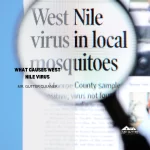Understanding what home insurance does not cover is crucial for homeowners seeking to protect their investments. Home maintenance issues, especially those stemming from neglect, often lead to uncovered damages.
For instance, gutters play a vital role in home upkeep, yet damages from poorly maintained gutters are typically not covered by insurance policies.
This exclusion underscores the importance of regular maintenance to prevent costly repairs that insurance won’t cover.
Additionally, natural disasters, wear and tear, and specific types of water damage are commonly excluded from policies, highlighting the need for homeowners to thoroughly understand their insurance coverage.
Taking proactive steps in home maintenance and considering additional coverage options can mitigate risks associated with these exclusions.
This introduction sets the stage for a deeper exploration of insurance coverage limitations, with a focus on preventing misunderstandings and ensuring homeowners are adequately prepared for potential uncovered damages.
Why Understand Home Insurance Exclusions?
Understanding home insurance exclusions empowers homeowners to identify coverage gaps, ensuring they’re not caught off guard by unexpected expenses. Recognizing what your policy does not cover can lead to significant cost savings by allowing for informed decisions on additional coverages or preventative measures.
This knowledge not only prevents financial strain but also guides homeowners in maintaining their properties to mitigate risks that are not covered.
Table of Contents:
How Can Knowing Exclusions Save You Money?
Knowing your insurance exclusions can save money by highlighting areas where additional insurance or warranties might be needed. For instance, if certain types of water damage are not covered, homeowners can invest in preventative maintenance or supplemental policies, avoiding large out-of-pocket expenses for repairs. Awareness leads to proactive measures, such as gutter cleaning to prevent water damage, which is often excluded due to maintenance neglect.
What Are the Common Misconceptions About Home Insurance?
Many homeowners believe home insurance covers all types of damage and disasters, which is a common misconception. However, most policies have specific exclusions like natural disasters, wear and tear, and maintenance-related damages. Clarifying these misconceptions ensures homeowners are adequately prepared and can take necessary actions to protect their home and financial well-being.
What General Damages Are Excluded From Home Insurance?
Home insurance typically excludes damages that are preventable through maintenance, natural disasters without additional coverage, and general wear and tear. Understanding these exclusions is crucial for homeowners to comprehend the scope of their coverage and the importance of regular home upkeep.
Why Are Natural Disasters Often Excluded?
Natural disasters are often excluded because they carry high risks that require specialized insurance coverage. Regions prone to certain disasters, like floods or earthquakes, need policies tailored to those specific risks, reflecting the higher likelihood and potential cost of such events.
How Does Wear and Tear Affect Your Coverage?
Wear and tear affect coverage by highlighting the homeowner’s responsibility for regular maintenance. Insurance policies do not cover damages that occur due to the aging process of a home, emphasizing the need for homeowners to maintain their property to prevent issues that could lead to significant damage over time.
What Types of Water Damage Are Not Covered?
Insurance policies commonly exclude water damage caused by flooding, sewer backups without specific endorsements, and gradual damage due to leaks or improper maintenance. These exclusions stress the importance of regular inspections and maintenance, such as gutter cleaning, to prevent water-related issues not covered by standard policies.
How Do Maintenance Issues Impact Home Insurance?
Maintenance issues significantly impact home insurance by potentially voiding coverage for damages that arise from neglect. Insurance providers expect homeowners to conduct regular maintenance to prevent easily avoidable damages. Negligence in this area can lead to insurance claims being denied, underscoring the importance of routine upkeep to ensure coverage remains valid.
What Maintenance Negligence Can Void Your Coverage?
Maintenance negligence that can void your coverage includes failing to address leaky roofs, ignoring plumbing issues, and not maintaining home heating and cooling systems. Such neglect can lead to severe damage over time, which home insurance policies typically do not cover, emphasizing the homeowner’s role in preventing avoidable damages through regular maintenance.
Can Ignoring Leak Repairs Lead to Uncovered Damage?
Ignoring leak repairs can indeed lead to uncovered damage. Continuous water intrusion from leaks can cause structural damage, mold, and other issues that insurance policies often exclude due to being preventable with timely repairs. This situation highlights the critical nature of addressing leaks promptly to avoid costly out-of-pocket expenses.
Why Are Damages From Poorly Maintained Gutters Not Covered?
Damages from poorly maintained gutters are not covered because gutters play a crucial role in directing water away from the home’s foundation, walls, and roof. Neglecting gutter maintenance can result in water damage, foundation issues, and roof damage, which are seen as preventable through regular cleaning and maintenance, thus not typically covered by home insurance.
Are Pest Infestations Covered by Home Insurance?
Pest infestations are generally not covered by home insurance because they are considered preventable through regular home maintenance. Insurers view pest control as the homeowner’s responsibility, emphasizing the need for routine inspections and treatments to prevent infestations that can lead to significant damage.
How Do Policy Limits Affect Claim Rejections?
Policy limits significantly affect claim rejections, as they define the maximum amount an insurer will pay for a covered loss. Damages exceeding these limits are the homeowner’s responsibility, highlighting the importance of understanding your policy’s limits and considering additional coverage to ensure adequate protection against potential risks.
What Specific Conditions Are Not Covered?
Specific conditions not covered by home insurance typically include mold and fungus growth, damage from earth movements, and poor construction or faulty workmanship. These exclusions stress the need for homeowners to be proactive in addressing potential risks and considering additional policies or riders for comprehensive coverage.
Are Mold and Fungus Growth Covered by Home Insurance?
Mold and fungus growth are not typically covered by home insurance unless directly resulting from a covered peril. This exclusion underlines the importance of controlling humidity and promptly addressing water leaks to prevent growth that could lead to significant health issues and property damage.
Is Damage From Earth Movements Covered?
Damage from earth movements, such as earthquakes, landslides, and sinkholes, is usually excluded from standard home insurance policies. Homeowners in areas prone to such risks should consider specific insurance to cover these natural events, ensuring protection against potentially devastating financial losses.
What About Poor Construction or Faulty Workmanship?
Poor construction or faulty workmanship is not covered by home insurance, as these issues stem from the construction process rather than sudden, unforeseeable events. Homeowners should ensure contractors are reputable and insured, and consider warranties or guarantees for workmanship to protect against defects.
How to Mitigate Risks Not Covered by Home Insurance?
Mitigating risks not covered by home insurance involves proactive measures to prevent damages and financial losses. Homeowners should prioritize regular maintenance, especially in areas prone to specific exclusions like water damage from gutter issues, and consider additional insurance options for comprehensive coverage.
What Preventative Measures Can Homeowners Take?
Homeowners can take several preventative measures to reduce the risk of damages not covered by insurance. Regularly cleaning gutters, inspecting roofs, and ensuring proper drainage around the foundation are crucial steps. Additionally, installing smoke detectors, security systems, and using water sensors can help prevent fires, theft, and water damage, respectively.
When Should You Consider Additional Coverage Options?
Considering additional coverage options becomes essential when the standard policy does not cover high-risk areas specific to your location or property type. Homeowners in flood-prone areas should seek flood insurance, while those in seismic zones might need earthquake coverage. Understanding the limitations of your current policy helps in deciding when to opt for riders, endorsements, or separate policies for complete protection.
What Are Riders and Endorsements?
Riders and endorsements are additional coverages that can be added to a standard insurance policy to cover specific items or perils not included in the base policy. They allow homeowners to customize their insurance coverage to include protection against risks like identity theft, valuable personal property, and specific natural disasters.
How Does Umbrella Insurance Provide Extra Protection?
Umbrella insurance provides extra protection by offering additional coverage beyond the limits of homeowners’ and auto insurance policies. It kicks in when the liability limits of other policies have been reached, covering large claims or lawsuits that could otherwise significantly impact the homeowner’s financial stability.
Understanding the Fine Print of Your Home Insurance Policy
Understanding the fine print of your home insurance policy is crucial for recognizing coverage limits and exclusions. Regular reviews and consultations with insurance agents can ensure that homeowners are fully aware of their policy’s scope, helping to avoid surprises in the event of a claim.
Why Is It Important to Review Your Policy Annually?
Reviewing your policy annually is important to ensure that coverage remains adequate as your life circumstances and property values change. Annual reviews can reveal if additional coverage is needed due to renovations, purchases of valuable items, or changes in local risks, ensuring that the policy continues to meet the homeowner’s needs effectively.
How to Negotiate Coverage for Grey Areas?
Negotiating coverage for grey areas involves discussing with your insurance provider to clarify or expand coverage for specific scenarios that are not clearly covered or excluded in the policy. Homeowners should present their concerns, document property conditions, and potentially seek endorsements or adjustments to the policy to cover these areas, ensuring comprehensive protection.


